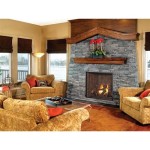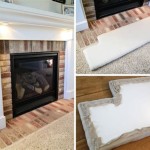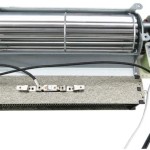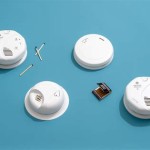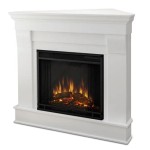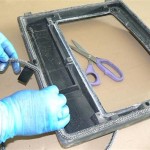Ventless Gas Log Fireplace Inserts: An Informative Overview
Ventless gas log fireplace inserts offer a convenient and aesthetically pleasing alternative to traditional wood-burning fireplaces. These inserts provide the ambiance of a fire without requiring a chimney or venting system, making them a popular choice for homeowners seeking supplemental heat and visual appeal. Understanding the functionality, benefits, safety considerations, and installation requirements is crucial before selecting and installing a ventless gas log fireplace insert.
These inserts function by burning natural gas or propane within a contained firebox, designed to maximize heat output and minimize emissions. The logs, typically made of ceramic or refractory concrete, are arranged to mimic the appearance of a real wood fire. A burner system, usually located beneath the logs, distributes gas and creates the flame. The firebox is engineered to promote complete combustion, minimizing the production of carbon monoxide and other harmful byproducts. An Oxygen Depletion Sensor (ODS) is a critical safety feature, designed to shut off the gas supply if the oxygen level in the room drops below a safe threshold.
The absence of a chimney or flue significantly simplifies the installation process, making ventless inserts suitable for a wider range of homes. However, this design necessitates careful consideration of ventilation requirements and adherence to safety guidelines. Proper installation and regular maintenance are essential to ensure safe and efficient operation.
Understanding the Operational Principles
The operation of a ventless gas log fireplace insert relies on a specific chemical process known as complete combustion. This process aims to convert the fuel (natural gas or propane) into carbon dioxide and water vapor with minimal production of harmful byproducts like carbon monoxide. The burner system is designed to mix the fuel with air in a precise ratio, ensuring a clean and efficient burn. The ceramic or refractory logs radiate heat into the room, providing supplemental warmth. The presence of an ODS is paramount; it continuously monitors the oxygen levels in the room. If the oxygen concentration drops below a predetermined level, indicating incomplete combustion and potential carbon monoxide buildup, the ODS automatically shuts off the gas supply, preventing hazardous conditions. This failsafe mechanism is a critical component of ventless gas log inserts and is mandated by safety regulations.
The design of the firebox also plays a crucial role in ensuring efficient and safe operation. The shape and materials used in the firebox are engineered to maximize heat radiation and promote complete combustion. Some models incorporate features like catalytic converters or oxygen enrichment systems to further reduce emissions. The logs themselves are typically designed with intricate details to enhance the visual appeal of the fire. They are often crafted to resemble specific types of wood, adding to the realistic aesthetic.
Ventless gas log inserts are often equipped with a control valve that allows the user to adjust the flame height and heat output. Some models also include a thermostat, enabling automatic temperature regulation. These control features provide flexibility and allow homeowners to customize the heating experience to their individual needs. Furthermore, many models incorporate remote control functionality, enhancing convenience and ease of use.
Advantages of Ventless Gas Log Fireplace Inserts
Ventless gas log fireplace inserts offer several advantages over traditional wood-burning fireplaces and vented gas log systems. One of the most significant benefits is the ease of installation. Since these inserts do not require a chimney or venting system, they can be installed in almost any room with a gas line. This eliminates the need for costly and complex chimney construction or modification. This accessibility makes them an attractive option for homeowners who lack existing fireplaces or those seeking to add a fireplace to a room without significant renovations.
Another key advantage is the high energy efficiency of ventless gas log inserts. Because they do not vent heat to the outside, they can achieve efficiency ratings of close to 99%. This means that almost all of the heat generated by the fire is directed into the room, providing significant supplemental heating. Compared to traditional wood-burning fireplaces, which can lose a significant amount of heat through the chimney, ventless inserts offer a more energy-efficient heating solution. This can translate to lower heating bills and reduced energy consumption.
Beyond energy efficiency, ventless gas log inserts provide a clean and convenient alternative to wood-burning fireplaces. They eliminate the need to chop, haul, and store wood, as well as the mess associated with ashes and soot. This makes them a more convenient and hassle-free option for homeowners who want the ambiance of a fire without the added work. Furthermore, they produce fewer emissions than wood-burning fireplaces, contributing to improved indoor air quality.
Safety Considerations and Ventilation Requirements
While ventless gas log fireplace inserts offer numerous benefits, it is crucial to understand and address the associated safety considerations. The primary concern is the potential for carbon monoxide buildup. Although designed to burn cleanly, incomplete combustion can occur if there is insufficient oxygen in the room. This can lead to the production of carbon monoxide, a colorless, odorless gas that can be deadly. Therefore, it is imperative to install a properly functioning carbon monoxide detector in the room where the insert is located, and to regularly test and maintain it.
Adequate ventilation is also essential when using a ventless gas log fireplace insert. While they do not require a chimney, they still need a sufficient supply of fresh air to ensure complete combustion. Most manufacturers recommend a minimum room size and ventilation requirements, which should be carefully followed. This typically involves providing a certain amount of openable window or door space to allow for proper air circulation. Never operate a ventless gas log insert in a confined space with inadequate ventilation.
It is also crucial to ensure that the insert is properly sized for the room. An oversized insert can produce excessive heat, leading to discomfort and potential safety hazards. Furthermore, it can increase the risk of incomplete combustion and carbon monoxide buildup. Consult with a qualified professional to determine the appropriate size insert for your room based on its dimensions and insulation characteristics. Regular maintenance, including cleaning the burner system and inspecting the ODS, is also essential to ensure safe and efficient operation. Failure to maintain the insert can increase the risk of malfunctions and safety hazards.
Local building codes and regulations regarding the installation and use of ventless gas log fireplace inserts should be carefully reviewed and adhered to. Some jurisdictions may have specific restrictions or requirements, such as mandatory inspections or limitations on the type of insert that can be used. Compliance with these regulations is essential to ensure safety and avoid potential legal issues.
:max_bytes(150000):strip_icc()/ventless-gas-fireplaces-4160746-hero-f9d4bdcd9bd446eb84406de306f790ba.jpg?strip=all)
How To Pick Out A Ventless Gas Fireplace

Vent Free Inserts White Mountain Hearth

Considering A Ventless Gas Fireplace Here S What You Need To Know Bob Vila

Napoleon Gvfl24 Ventless Gas Log Set 24 Inch

What Is A Ventless Gas Fireplace Experts In Gaithersbutg Md

White Mountain Hearth By Empire Ventless Outdoor Traditional Premium Gas Fireplace 36

Outdoor Vent Free 36 Complete Gas Fireplace Stainless Steel With Remote Control Vre3200 Vre3236

Pleasant Hearth Universal Circulating Zero Clearance 42 In Ventless Dual Fuel Fireplace Insert Phzc42c The Home Depot

White Mountain Hearth Vfs32fb Breckenridge Ventless Select Firebox With Flint Hill Gas Log Set And Contour

Superior 36 Inch Vent Free Circulating Gas Firebox Vrt3536 North Country Fire

